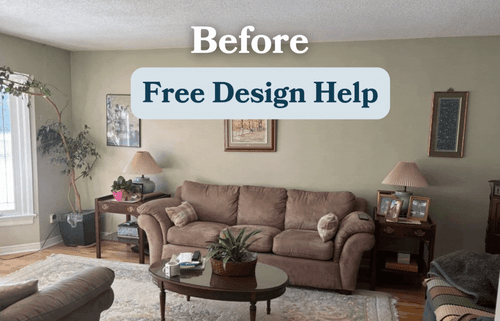How to Measure a Room To Buy the Right Furniture: 7 Simple Steps
September 3, 2025
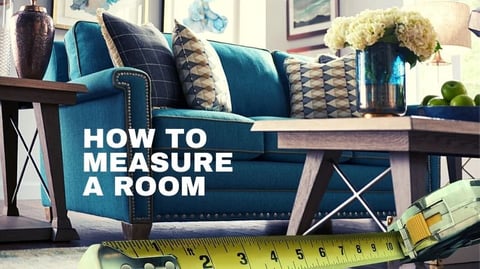
Est. Reading Time: 7 Mins
Choosing the right furniture for your home is an exciting process, but it can also feel overwhelming if you don’t prepare ahead of time.
One of the most important steps that homeowners often overlook is measuring the space where the new furniture will go.
Mary Lee Smyth, the interior designer at La-Z-Boy Kingston, says “Without accurate measurements, you could find yourself stuck with a sofa that won’t fit through the front door or a sectional that overpowers your living room.”
In this step-by-step guide, we'll walk you through how to accurately measure your room and your home’s access points to ensure a smooth furniture-buying process.
Key Takeaways:
- Measure your room's width, length, and height before purchasing furniture.
- Don’t forget to measure doorways, hallways, and stairs to ensure the furniture fits through all entry points.
- A sketch of your room helps visualize furniture placement and avoid overcrowding.
- Take note of windows, vents, and electrical outlets to prevent awkward furniture positioning.
- If your furniture has a reclining feature, ensure there’s enough clearance for it to fully extend.
- Make sure to take proper and full photos of your room and furniture when working with an interior designer.
In This Article…
How to Measure Furniture
Before measuring your room, it’s important to understand how furniture dimensions are listed. At La-Z-Boy, furniture dimensions include:
- Width: The widest point from armrest to armrest.
- Depth: The distance from the front edge to the backrest.
- Height: From the floor to the tallest point, such as the top of the backrest.
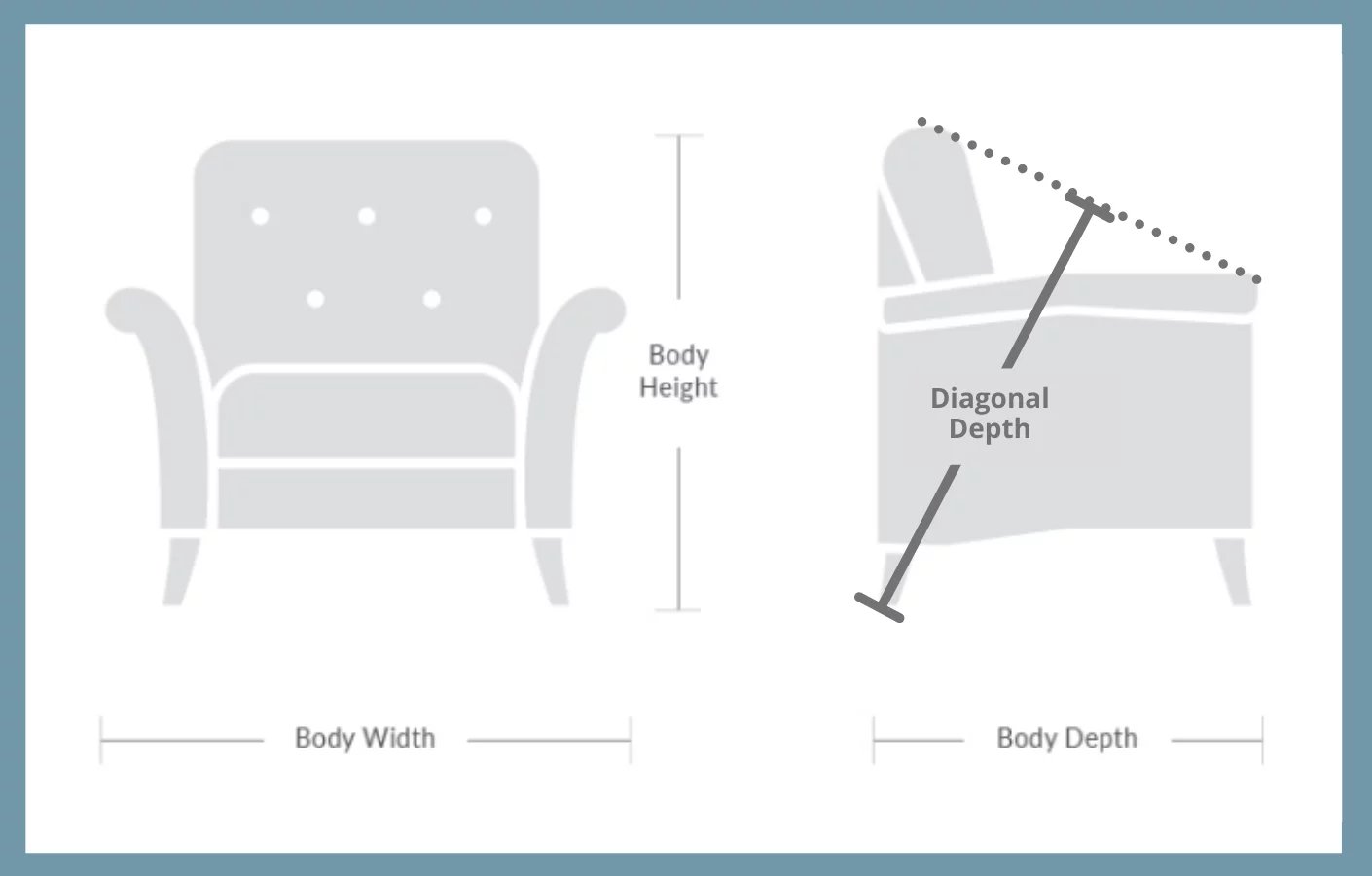
Some pieces, like sectionals or recliners, also have a diagonal depth—a critical measurement for tight spaces or angled entryways.
To measure the diagonal depth, place a ruler from the top-back corner of the frame to the front of the armrest. After that, measure from the bottom rear corner up to where it intersects with the ruler.
Mary Lee says, “If you’re buying online, double-check whether the listed dimensions are for the furniture itself or the packaging. You can contact the store if you’re unsure.”
Step 1: Gather Your Measuring Tools
Before diving into measurements, make sure you have the following:
- Tape Measure: Ideally 25 feet long and wide enough to remain stable.
- Laser Measuring Tool: A quick way to measure long walls with precision.
- Pencil and Paper: Graph paper can help with neat sketches but isn’t mandatory.
- A Helper: If available, a helper makes measuring easier and faster.
Mary Lee adds, “The person holding the tape’s toggle end—often called the ‘smart end’—is the one who does all the running!”
Step 2: Create a Rough Sketch of Your Room
To start your measurement process:
- Stand at the room’s entrance and sketch the shape of the room as if you were looking from above.
- Don’t worry about straight lines—this is a rough guide that can be polished later.
- Label each wall and significant features, such as windows and doors.
Mary Lee says the best way to begin is by starting at the entrance and going along the direction of your wall. “This is a proper technique that should cover every inch of your floor,” she states.
If you're also interested, you can opt to transfer your drawing and measurements to an online 3D room planner. La-Z-Boy has a 3D Room Planner for designers and customers to use for visualizing your space fully.
Step 3: Measure Each Wall of Your Room
As you begin at the first wall of your choice, take note of the following:
Positioning the Tape Measure:
Start at one corner of the wall and secure the "smart end" of the tape measure firmly against the joint. Hold the tape tight and straight across the wall to avoid slack. If you’re measuring alone, use painter’s tape or a heavy object to keep the tape in place.
Measure from Corner to Corner:
Stretch the tape across the overall length of the wall and width until you reach the opposite corner. For obstructions like furniture, measure along the baseboards at floor level for accuracy. Repeat the measurement to double-check consistency.
Using a Laser Measuring Tool:
For larger rooms, a laser tool can make long measurements easier. Place the laser flat against one wall, point it at the opposite side (avoiding mirrors or windows), and press the button to display the measurement instantly.
Height Measurements:
After measuring the length, measure the wall’s height from floor to ceiling. Standard ceilings are usually 8 feet high, but modern or older homes may vary. Note any sloped ceilings or beams that could affect furniture placement.
Mary Lee recommends: “Always measure in feet and inches to match standard furniture measurements.”
Step 4: Include Doors, Windows, and Openings
Make sure to indicate where the doors, doorways, windows or any other wall openings are located. These are places you want to be aware of so your furniture doesn’t block those important spots.
You want to record these measurements in two ways, (1) with the trim and (2) without the trim. The reason is if there is a sill or trim on the bottom of the window, it might impede furniture placement. It is crucial with door measurements to know the width of the opening without trim to determine if the furniture can pass through.
As you face the door or window, you will need to record the following measurements:
- Left Wall Placement: measure from the left corner of the wall to the edge of the opening or trim.
- Width Including Trim/Frame: measure across the opening from the outside edges of the trim.
- Width Excluding Trim/Frame: measure across the opening from the inside of the trim (door: inside door jambs).
- Right Wall Placement: measure from the right side of the opening trim to the right corner of the wall.
- Top Wall Placement: measure from the ceiling to the top of the trim.
- Height Including Trim/Frame: measure from the outside edge of the top trim to the outer edge of the bottom trim (or the floor for a doorway/entryway).
- Height Excluding Trim/Frame: measure the height from the inside edges of trim (for a door from the head, the interior top frame, to the door sill, the inside bottom frame).
- Bottom Wall Placement: measure from the outer trim to the floor.
- Diagonal Depth Excluding the Frame (Important Door Measurement): measure from the inside top left corner of the door frame to the inside bottom right.
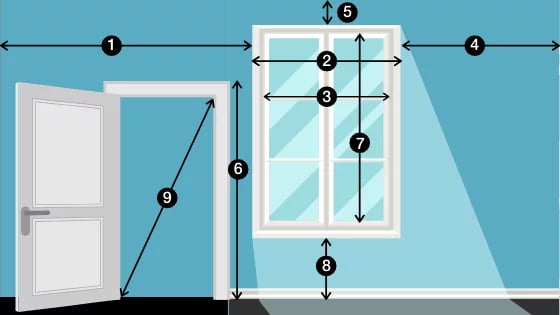
Also, measure the distance from each door or window to the nearest wall to ensure proper furniture placement.
Your sketch should look a little similar to this one…
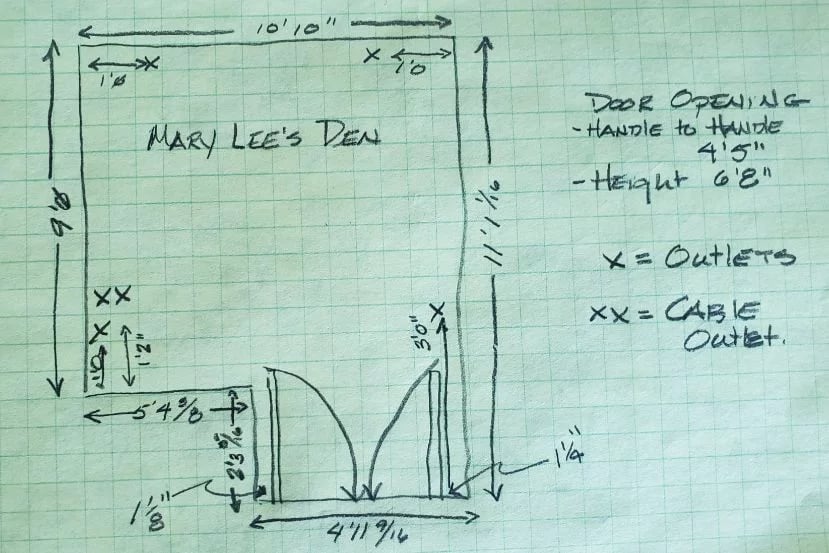
Step 5: Take Note of Additional Details in Your Sketch
Some elements in your room can impact furniture placement. You will want to take note of specific details and indicate their location on your sketch. These may include:
- Ceiling fixtures or fans
- Fireplace details/hearth
- Light switches
- Outlets
- Ductwork
- Floor or wall vents
- Radiators
- TV
These details can be critical to the overall design or furniture placement. It is also beneficial to take measurements of larger fixtures if they are close to the furniture.
If you have flooring, carpet or tiling projects, input your measurements into a square footage calculator. This can also help you determine material costs.
Step 6: Take Proper Photos of Your Furniture and Room
Now that your simple room sketch is complete, it is a valuable tool you can use when shopping for the right furniture for your space. You can also update this sketch whenever you purchase new furniture in the future, so keep it handy for the next time you might need it.
However, when working with an interior designer, like Mary Lee, any visual component is key. And, what better way to show someone your space outside of your home than through a photo?
Mary Lee explains that taking proper photos of each furniture piece with the entire frame in focus is essential to know if a similar La-Z-Boy product could fit in your space. “If the furniture is only half in, it becomes really difficult for us to guess correctly what can fit in the room.”
Take photos in a horizontal view to help capture everything in the entire frame. Mary Lee says that standing in the corner of a room can help with this, especially if it's a larger frame. “The only time you would zoom in on a piece is if we want to see the material on the furniture cover to match it or change it,” she says.
A video is also a great way to show off the furniture piece. Although there is no need for talk in the video itself, you should also let the interior designer know of any obstructions in the room that could potentially impede on the furniture placement (doorways, windows, outlets, etc.)
Lastly, consider taking photos of the entire room to augment your sketch. Capture photos of the room from various angles, as shown in the below image. Additionally, take pictures of any furniture pieces you would like to remain in the room.
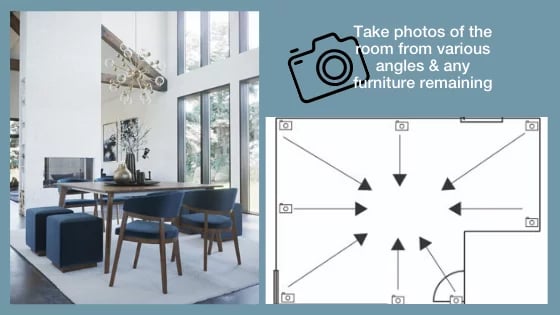
Step 7: Measuring Points of Entry for Delivery Day
One thing that many tend to forget is measuring the delivery path for your new furniture. A key part of measuring for new furniture is ensuring it can get into your home and through to the intended room.
Start by measuring the width and height of each doorway, hallway, and stairwell, noting any tight corners or obstacles. Measure the distance from the entryway to the far wall of the room to ensure enough maneuvering clearance.
If the entryway width exceeds the furniture’s width, it can be moved horizontally. If not, you may need to tilt it vertically, which means the entryway height must also exceed the furniture's width.
On delivery day, plan the best path into your home. Decide which entrance is the most direct, whether it’s the front, side, or back, and check for any barriers like narrow porches or sharp turns. Taking these steps ensures a smooth delivery and prevents unwanted surprises.
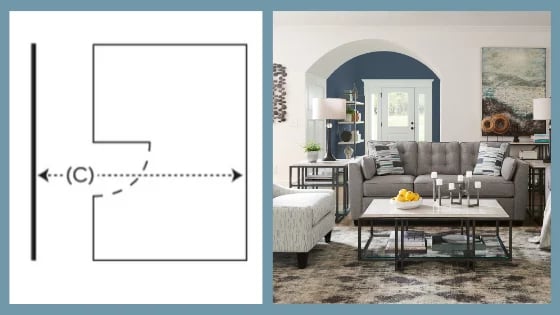
If the entryway clearance (C) exceeds the piece’s width, you can move it horizontally. Alternatively, if the entryway clearance (C) is less than the piece’s width, you must move it vertically, meaning that the entryway height must exceed the furniture’s width.
WARNING: You’ll find yourself in a real pickle if the piece’s width exceeds both the entryway clearance and height.
What's Next?
With your room measurements and sketch in hand, you’re ready to choose the perfect piece of furniture that fits your space beautifully.
Need some help? Book a consultation with one of our expert interior designers in our La-Z-Boy locations in Ottawa, Gatineau or Kingston! Our team will guide you through the entire process and create a 3D room design that brings your vision to life.
While you’re browsing, check out our top furniture collections for inspiration:
If you want to learn more about La-Z-Boy in general, take a look at this comprehensive furniture buyers guide.
Related Articles:
How to Choose the Right Coffee Table Size & Shape
How to Choose the Right Stool Height
Product Info Request
Please provide us with your name and email and we'll get back to you as soon as possible regarding this item.
